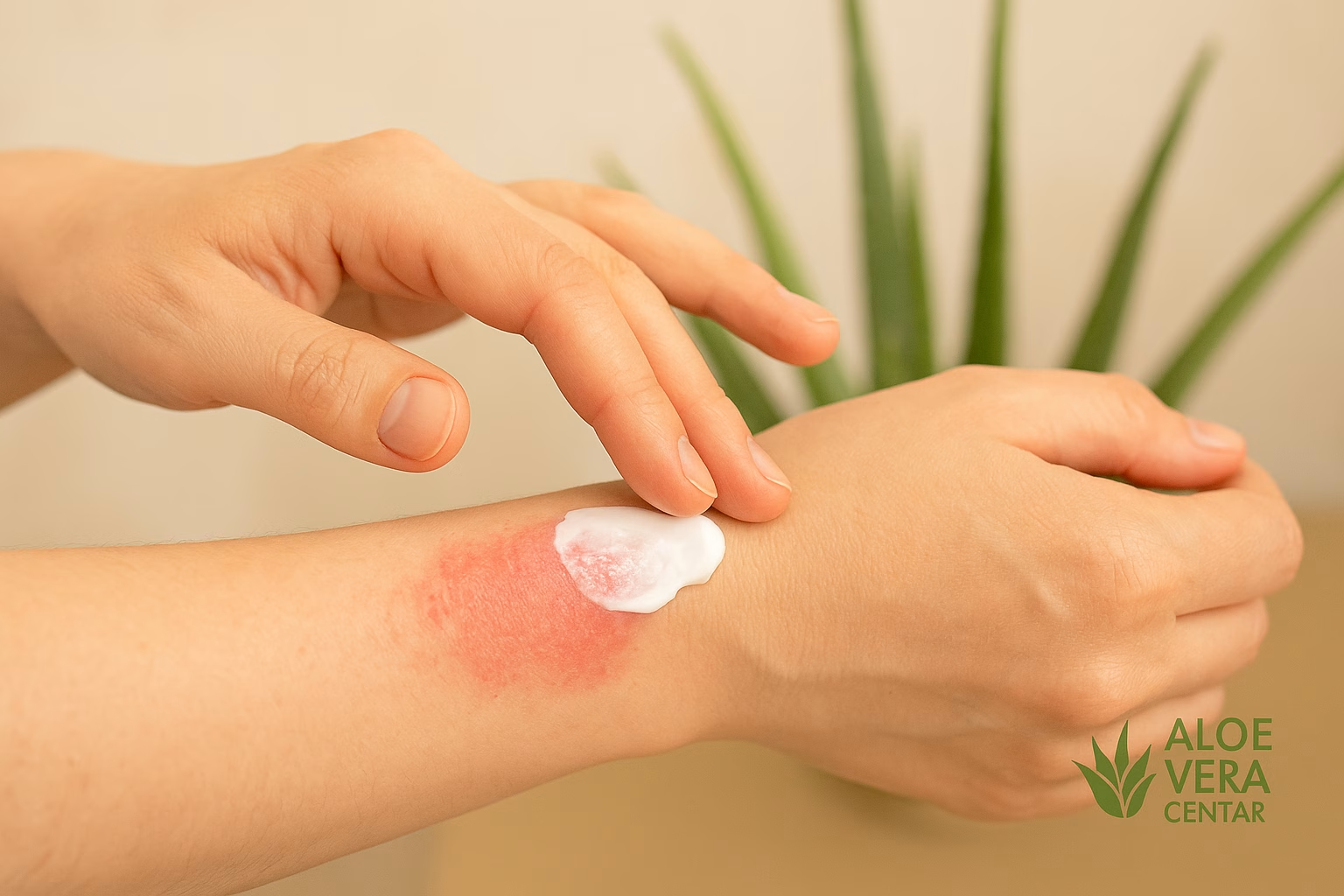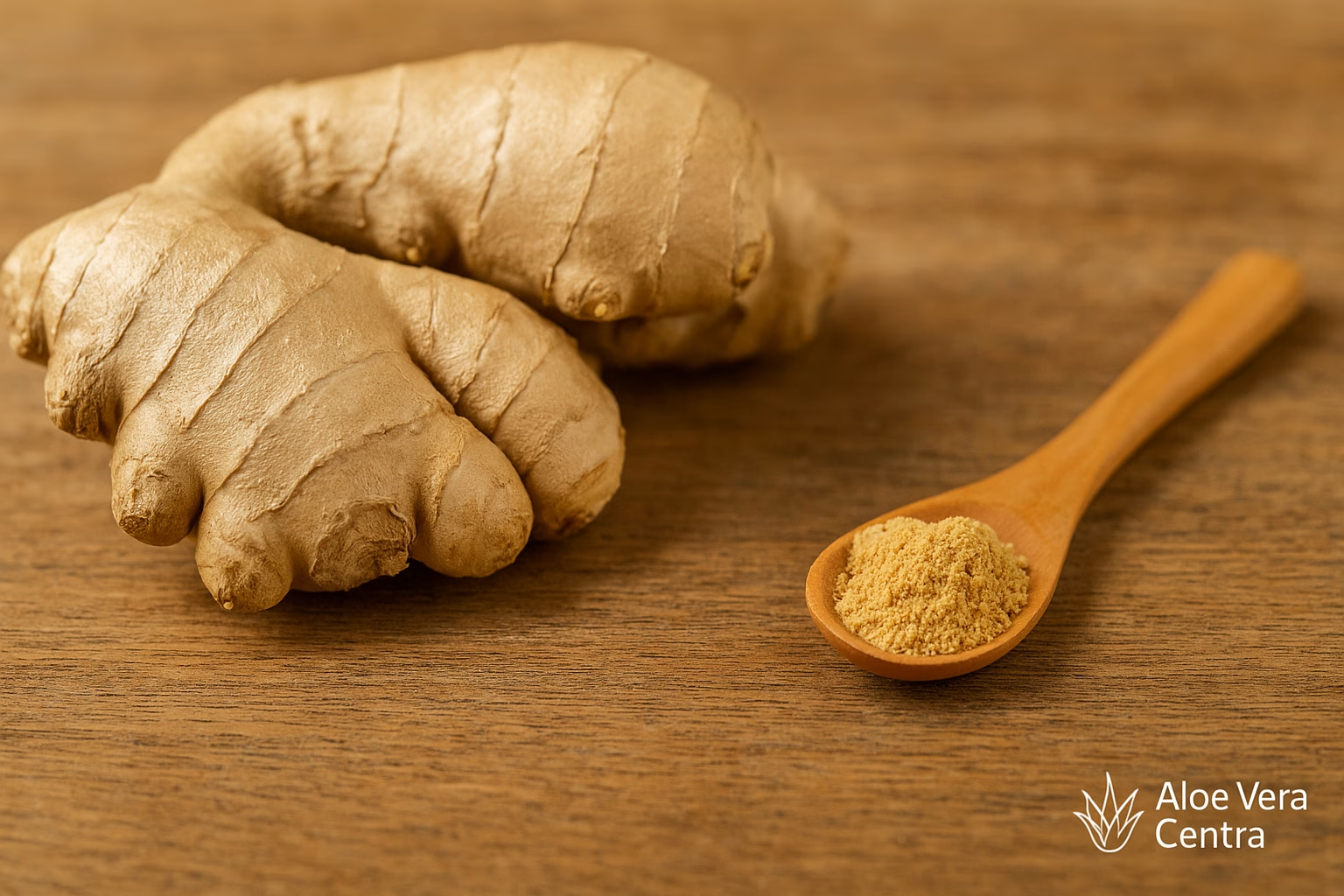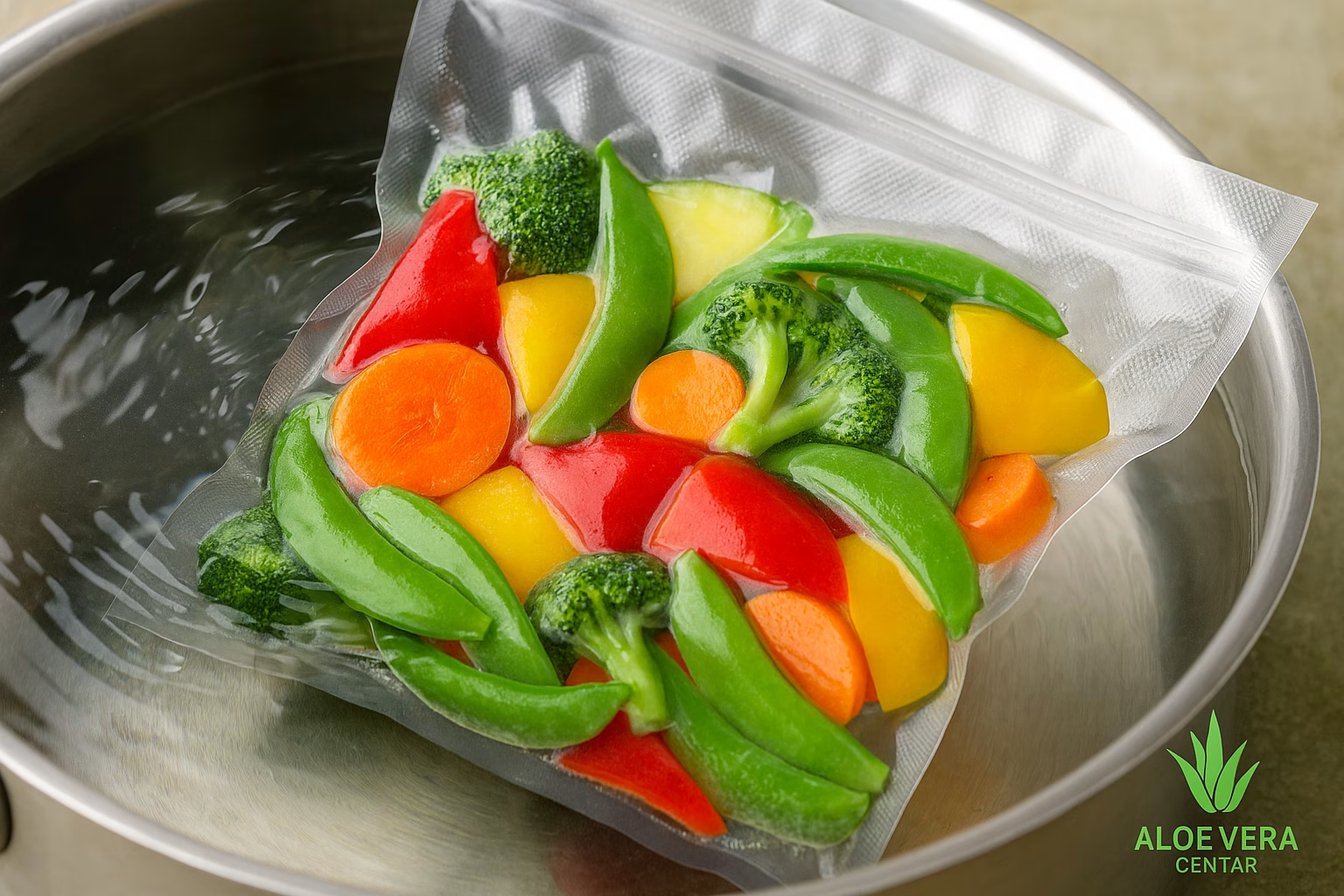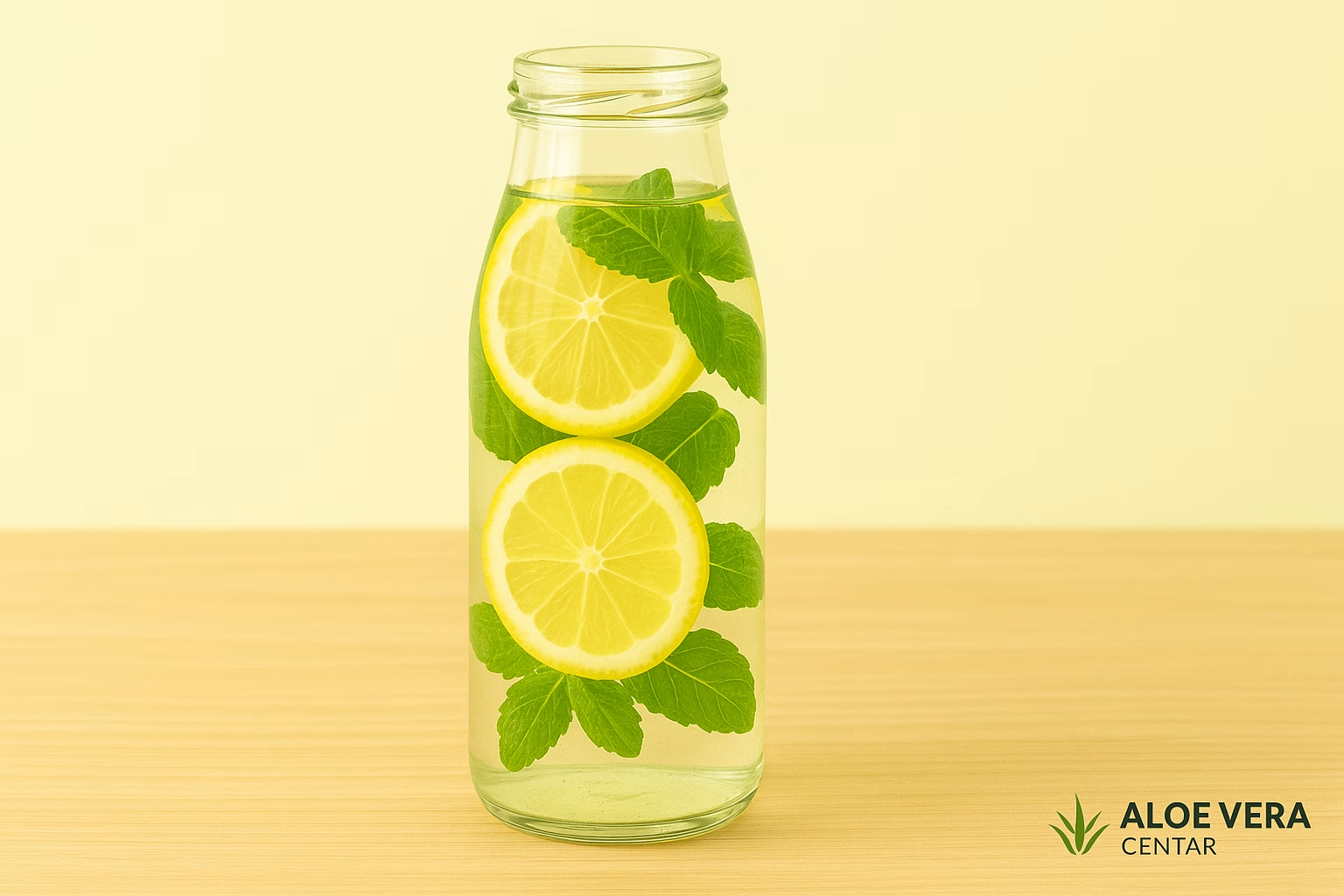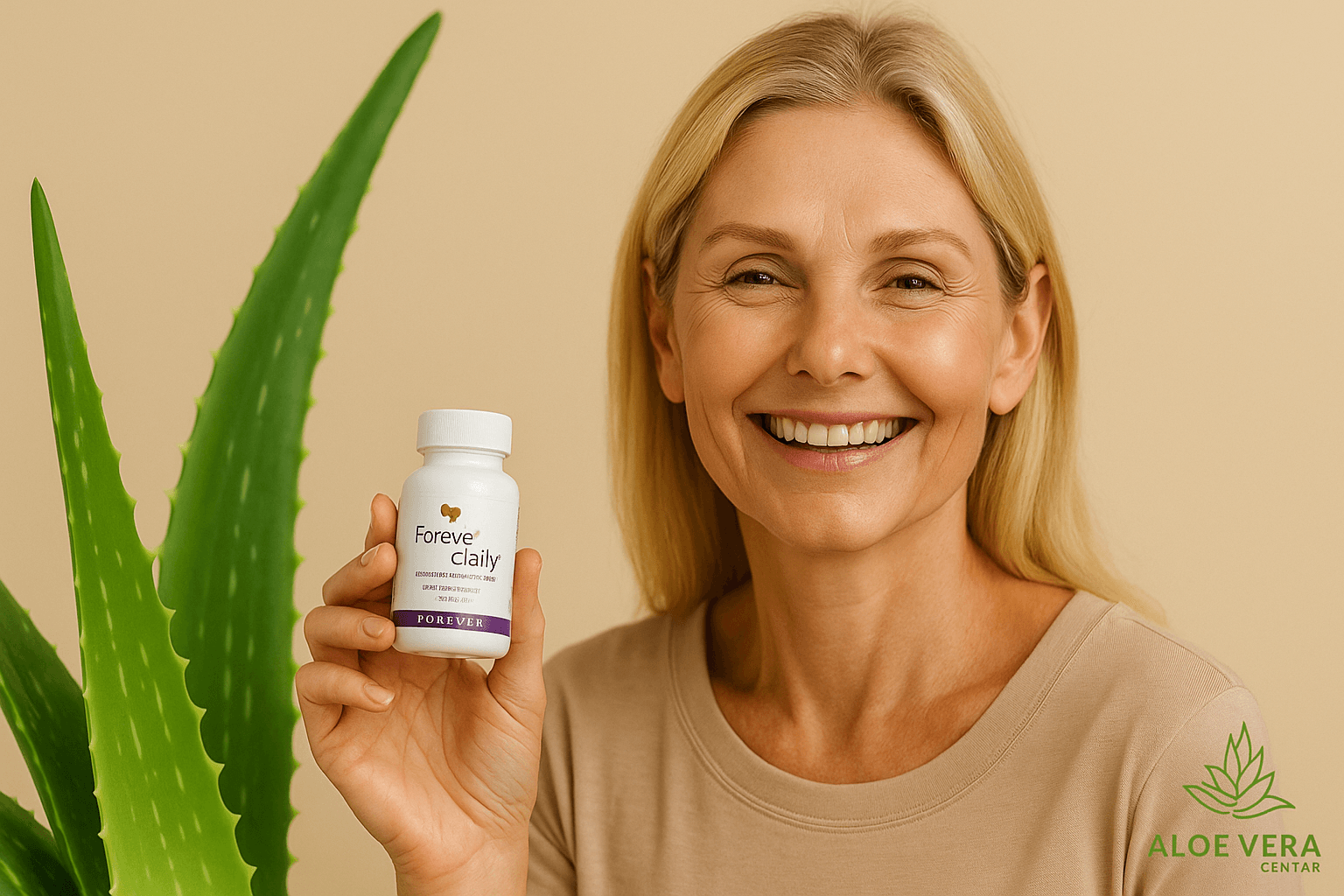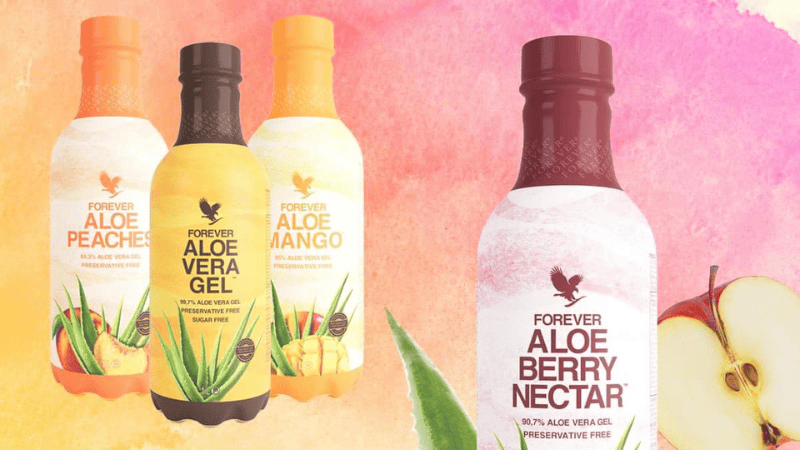
Forever Aloe Vera Gel vs. Aloe Berry Nectar: What are the key differences?
Forever Aloe Vera Gel vs. Aloe Berry Nectar: What are the key differences?
Forever Aloe Vera Gel. Aloe Berry Nectar. Two names, seemingly similar products, and yet many people wonder: “What’s the difference and what should I choose?” If you’ve ever found yourself in front of a shelf or online store, wondering whether you should reach for pure aloe vera gel or the one enriched with cranberry and apple flavor, you’re not alone. This is exactly the dilemma that is repeated among users who want to experience the benefits of consuming aloe vera, but don’t know where to start.
You may be wondering: “Sounds too good to be true? What are the benefits of aloe vera?” Keep reading. In this article, we will review Forever Aloe Vera Gel and Aloe Berry Nectar – two of the most popular drinks from the Forever Living Croatia range. We will look at the composition, taste, methods of use and ideal situations when you might opt for one product or the other. We will also explore how to combine them with other dietary supplements and programs like the C9 detox, and why both drinks are popular choices for maintaining a balanced lifestyle.
Why aloe vera and why choose a drink?
You may have heard of the miraculous reputation of aloe vera, a succulent plant that offers a range of benefits for the digestive system, skin, immunity and general well-being. Aloe vera is rich in enzymes, vitamins, minerals and a special type of polysaccharide called acemannan. According to research on PubMed , regular consumption of aloe can support digestive function, help maintain healthy energy levels and contribute to better absorption of nutrients.
Why a drink, not capsules or creams? While topical application helps the skin, taking aloe vera orally has a holistic effect on the body from the inside. Both products – forever aloe vera gel and aloe berry nectar – offer this option, with slightly different flavors and additives. Sound interesting? Let’s take a look at the main differences.
Forever Aloe Vera Gel: the pure essence of the plant
To begin with, Forever Aloe Vera Gel contains a high percentage of pure gel from the center of the Aloe Vera leaf (Aloe barbadensis Miller). Its main feature is minimal additional flavor processing, which means that with this variant you are truly consuming the essence of the plant itself. You will often see users describe the taste as “herbal”, slightly bitter or earthy.
Who is it intended for? Primarily for:
- People who like natural flavors: If you don’t like overly sweetened or fruity drinks, this is an ideal choice.
- Lovers of “real” aloe: Some want the maximum concentration of polysaccharides and other active substances without fruit additives.
- Traditional methods: Many have heard about the benefits of pure aloe, so they want a product that is as minimally processed as possible.
Compared to Berry Nectar, this drink has a more neutral flavor profile and can be more easily incorporated into juices or smoothies if you don’t enjoy the bitter aftertaste. It’s also useful if you plan on making your own DIY recipes or adding aloe to dishes, as it doesn’t have a dominant cranberry or apple flavor.
If you are interested in a more accurate micronutrient content, you may also want to explore aloe vera gel 330 ml, a smaller version of the same product that often proves practical for travel or when you want to try the gel in a smaller quantity.
Aloe Berry Nectar: added flavor and added benefit
For those who find the “pure” taste of aloe too strong, there’s aloe berry nectar , which includes added cranberry and apple juice in addition to aloe vera gel. This drink offers a slightly sweet-tart flavor due to the cranberries, making it more appealing to most palates.
Who will especially appreciate Berry Nectar?
- People who don’t like the taste of pure aloe: Cranberry and apple make the drink easier to consume. Many people even drink it in the morning, instead of fruit juice.
- Fruit drink lovers: If you normally like squeezed juices, this variant is a better transition to an aloe drink.
- Urinary system support: Cranberry is traditionally associated with urinary tract benefits, although these are not “miraculous” properties, but they can be a plus.
It is precisely this fruity taste that makes Berry Nectar a favorite for many, especially those who would otherwise “grit their teeth” when drinking pure aloe. Of course, the pure aloe content in Berry Nectar still makes up the majority of the drink, so you don’t lose the essential benefits of aloe vera.
Nutritional comparison and sugar level
One of the frequently asked questions is: “Does Aloe Berry Nectar contain more sugar because of the addition of apple and cranberry juice?” As a rule – yes, but not to the extent that it could be considered a sweet industrial juice. Manufacturers pay attention to the ratio and keep the level of naturally occurring sugars relatively low.
However, if you are on a strict low-sugar diet or are watching your glycemic index, Forever Aloe Vera Gel may be a better option. On the other hand, if your dietary goals are less restrictive, Berry Nectar is perfectly acceptable and probably more enjoyable to consume.
Can combining it with other supplements enhance the effect?
Aloe vera is often combined with various supplements to achieve additional goals, for example:
- Weight Loss and Detox: If you’re looking to lose a few pounds, you may have heard of the c9 package . It’s a program that involves consuming aloe vera and other supplements to regulate calories and boost metabolism. In that case, you can choose to drink the pure gel or Berry Nectar – depending on your personal preference.
- Multivitamins: Many users combine aloe drinks with products like forever daily , because they believe that aloe improves the absorption of vitamins and minerals.
- Omega fatty acids: If you also want to support the circulatory system and brain, forever arctic sea (rich in EPA and DHA) can be a good partner for aloe.
Of course, it’s always a good idea to read the instructions and not overdo it with too many supplements at once. If you’re looking for personalized advice on how to incorporate aloe vera and other products into your lifestyle, you can use our AI advisor . And once you’ve decided to buy, get 15% off your first order.
Taste and drinking method: when to drink and how?
While Forever Aloe Vera Gel is preferred by many people to drink neat (perhaps with a brief acclimatization to the bitterness), Aloe Berry Nectar is often consumed in a diluted form , like a “juice.” Some people add it to water, tea, or smoothies. If you’re new to the taste of aloe vera, here are some tips for both varieties:
- Chill: Many people find it easier to drink aloe from the refrigerator than at room temperature.
- Mix with fruit juice: If you have a pure gel and want a milder flavor, a little orange or lemon juice can help. With Berry Nectra, there is often no need for additional fruit juices, as it already contains cranberry and apple.
- Dosage schedule: It is recommended to drink aloe vera in the morning on an empty stomach, but it is not a strict rule – listen to your body and habits.
There is no universal recipe: some people like to drink 1 dcl on an empty stomach, others drink 50 ml several times a day. If in doubt, consult your nutritionist or follow the manufacturer’s official guidelines.
Benefits and why we love them: What are the similarities between the gel and Berry Nectra?
Although we have highlighted the differences, there are also numerous similarities. Both are:
- Rich in nutrients such as vitamins, minerals, amino acids and enzymes.
- They aid digestion thanks to the action of aloe and its enzymes.
- They support the immune system – to a greater or lesser extent, depending on the overall diet.
- They can be used in different phases of detoxification and weight regulation .
From a user’s point of view, the choice between Forever Aloe Vera Gel and Aloe Berry Nectar often comes down to personal taste, the possible need for a lower content of natural sugars, and the desire for a slightly different aromatic experience.
Possible side effects and precautions
Although these drinks are generally safe, it is important to emphasize a few precautions:
- Pregnant and breastfeeding women: It is important to consult a doctor before regularly consuming large amounts of aloe vera, as there is still not enough research on safety during these periods.
- People with intestinal diseases: Too much aloe can have a laxative effect and irritate the digestive tract.
- Chronically ill patients: If you have a serious medical diagnosis or are taking medication, it is also wise to consult a doctor before incorporating aloe vera into your daily routine.
Of course, it all depends on the amount. A normal daily intake (eg 60-120 ml per day) will rarely cause problems for a healthy adult, but it’s good to be informed.
Is Aloe Berry Nectar suitable for diabetics?
Because Berry Nectar contains natural sugars from apples and cranberries, people with diabetes or insulin resistance should be especially careful. It is not prohibited , but be aware that consuming fruit juice can raise blood glucose levels. If you are watching your glycemic index, Forever Aloe Vera Gel may be a better option, and you can occasionally include or dilute Berry Nectar with water.
If you are looking for additional solutions for appetite and weight regulation, you may also be interested in garcinia cambogia side effects – where you can read more about how garcinia can help curb sugar cravings. However, always exercise caution and measure your glucose if you have difficulty regulating your sugar levels.
How to choose the “right” drink for yourself?
Here is a quick guide to the decision:
- Love the natural taste? Consider pure Forever Aloe Vera Gel . Enjoy the full intensity of the plant.
- Want a fruity twist? Choose aloe berry nectar . Cranberry and apple add a touch of freshness and natural sweetness.
- Does the amount of sugar intake matter to you? If you’re counting every gram of carbs, maybe Gel is more appropriate. If you can afford some natural sugars, Berry Nectar is tastier.
- On a diet or C9 program? Both are acceptable options, but some prefer Berry Nectar for its taste. Others stick with the “full strength” of pure aloe.
If you’re not sure how it fits into your current lifestyle, remember that you can always consult a doctor or seek expert advice.
Impact on daily routine and proper habits
Introducing aloe vera into your daily routine – whether in pure or fruit form – can become part of a broader concept of self-care. Some people like to start their day with a small glass of aloe on an empty stomach, others prefer to drink it in the afternoon as a refreshment. The key is regularity.
If we want to change other habits at the same time (e.g., move more, cut back on sweets, or introduce a “green” breakfast), an aloe drink can be the “foundation” of a new daily routine. For example, someone might say, “When I wake up, I drink 60 ml of Forever Aloe Vera Gel , and then do a 15-minute stretching workout.” These small but consistent changes ultimately bring the biggest results.
Example of a daily schedule with aloe vera
While this is not a strict guide, here is what a “healthier” day with aloe consumption would look like:
- 7:00 AM – Wake up: Drink 60-100 ml of Aloe Berry Nectar (if you like a sweet taste) or pure Aloe Vera Gel . You can mix it with water.
- 7:30 – Light breakfast: Oatmeal with berries or protein smoothie.
- 10:00 – Snack: One apple or a handful of nuts.
- 12:30 – Lunch: Balanced meal (e.g. grilled chicken, salad, brown rice). It is recommended to avoid carbonated drinks.
- 3:00 PM – Break: If you feel a drop in energy, have some water or tea. Another 60 ml of aloe is possible if your schedule suits you.
- 6:30 PM – Dinner: Light protein meal or soup with vegetables. Fish menu with salad is also possible.
- 20:00 – Short walk: Walk for about 20 minutes in peace, stimulate digestion.
- 10:00 PM – Preparing for bed: A glass of warm water or herbal tea.
You don’t have to strictly stick to this schedule, but having a “rhythm” can make it much easier to maintain healthy habits.
FAQ: Frequently asked questions
1. Can I combine Forever Aloe Vera Gel and Aloe Berry Nectar within the same day?
Yes, many people drink different varieties in the same daily routine, for example, a clear gel in the morning and a Berry Nectar in the afternoon. Just be careful about the total amount and listen to your body’s reactions.
2. How do I know this is “real” aloe and not some diluted version?
Forever products are known for their controlled cultivation and quality standards. If you are skeptical, look for certificates on the packaging or check forever products prices and details. A quality manufacturer always publicly states the content and certificates (eg IASC – International Aloe Science Council).
3. How long can I keep the bottle after opening?
It is usually recommended to store it in the refrigerator and use it within 30 days. If you notice a change in color or taste, it is better to get a new bottle.
4. I use C9. What type of aloe do you recommend?
It’s up to you. Many people opt for the Berry Nectar inside the c9 pack because they find it tastier and “easier” to drink. However, if you prefer a neutral taste, the pure Gel is also a great choice.
Conclusion
Both Forever Aloe Vera Gel and Aloe Berry Nectar offer the benefits of consuming Aloe Vera, but with nuances that can make a difference in your personal experience. If you are a classicist and want the fullness of natural flavor, the pure Gel will be your choice. If you are looking for a fruity note or are struggling with the bitterness of aloe, Berry Nectar will provide you with a more pleasant and more adaptable taste.
Remember that no drink is a miracle cure: proper nutrition , adequate hydration , and regular exercise are the foundations of a healthy life. Aloe vera can be a great supplement for digestion, energy, and immunity, but the key is continuity and a balanced approach . For additional guidance and a personalized consumption plan, feel free to use our AI advisor . And if you’re ready to start now, get a 15% discount and experience the power of aloe vera in your everyday life.
Disclaimer: This article is for informational purposes only and is not a substitute for professional medical advice. Please consult your doctor if you have any medical conditions or are taking any medications.

